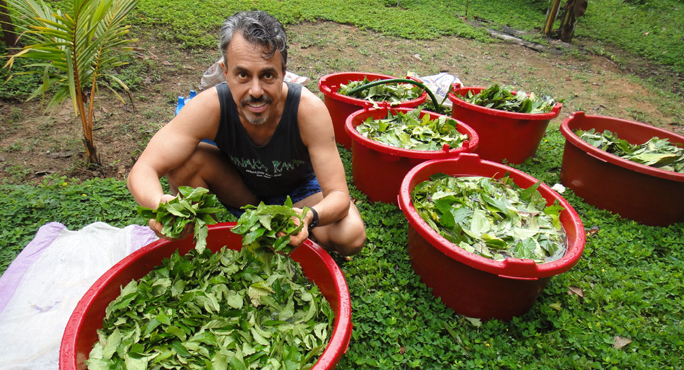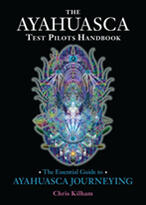
Photo by Zoe Helene
It would be great fun, not to mention highly instructive, to go on an exploration with Chris Kilham. But for those who are not ready to personally harvest real plants in actual far-off lands, his new book, The Ahayuasca Test Pilot's Handbook: The Essential Guide to Ayahuasca Journeying will be published in November.
Styling it as a manual doesn’t do justice to the fine prose writing. The book would be a welcome distraction just as much as it is serious education for university students, with references to experiences and reactions unknown to those who don’t travel in ethnobiology circles. Kilham's uses of plant substances are different from, for instance, those of Dr. Andrew Weil, whose use of botany is integrated with more traditional medicine.
Even Kilham’s professional title is unconventional. He is “Explorer-in-Residence” in the Department of Plant, Soil, and Insect Sciences at the University of Massachusetts at Amherst. His signature class—although currently he is on a break from teaching—is a one-credit ethnobiology course called “The Shaman’s Pharmacy.”
Medicine based on plants is not new. Most lifesaving medicines are plant-based, Kilham said in our telephone interview on September 19. But because when the patents expire, there is not as much money to be made, unfortunately, interest in manufacturing them may wane.
There is, however, continued interest in plants on the part of those seeking healing on multiple levels, including the spiritual one, and this part of the playing field deeply interests Kilham. That platform is where ayahuasca makes its entrance. Using ayahuasca (pronounced just as it looks) means seeking out a shaman who is, Kilham says, a safe person. Both deciding where to go to drink it and choosing a guide, he reminds us, take due diligence and self-care.
The book is not a prescription so much as it is a deliberate and instructive introduction to what, to many readers, may be new ideas. And to others, not. He is on the Medical Advisory Board of the Dr. Oz Show, and in his regular guest appearances, has provided information to the public about the safe use of essential oils and herbs. He has been a guest on Good Morning, America, Fox News, and 20/20.
The book also takes readers through a scientific analysis of plants that are psychoactive, from tobacco to mapacho to coca and beyond. Kilham includes cautionary advice about plants that are dangerous and that can be excluded from the ayahuasca mix. And the book includes also a comprehensive history of the concept and reality of shamanism, from its talented and wise practitioners to the sham healers seeking clients. Kilham notes that the ayahuasca shaman knows the spirit of the ayahuasca plant intimately, and can work with that entity to see directly into the spirit, body, and selfhood of the client.
After all, beliefs such as Buddhism, he reminds me in our interview, doesn’t consider “mind” to exist just within the individual. There is, he notes, a non-ordinary reality. That is where healing-- especially with the presence of a shaman—is effectuated.
On a lighter note, the shaman concept seems an active presentation of the old cartoon staple, “Don’t try this at home.” All is not overly serious in the realm of healing, and Kilham chuckles appreciatively in our interview at the mention of the old joke about what some philosophers might say at the hot dog stand: “Make me one with everything.”


